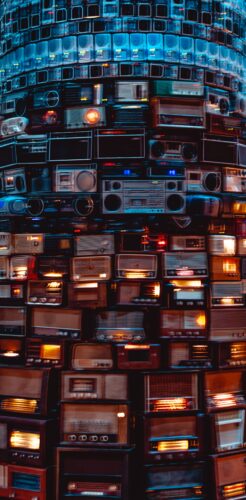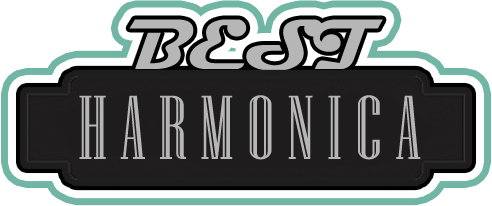So you’ve picked up the harmonica, have gained confidence and skill playing it, and now you ask yourself, how can I make this louder? Well, you are not the first one to ask yourself this. In fact, many musicians, especially if they choose to show off their talents live, explore options for amplifying their little instruments.
Thankfully, there are many resources available that will teach you how to amplify your harmonica manually or with an amp designed to connect with your harmonica. This article will outline some of our favorite ways you can amplify your harmonica either for your own enjoyment or to play live on stage.
The Harmonica sure has come a long way since the First Harmonica Ever Made. With technology constantly advancing, new music equipment and setups are emerging every day. Each piece of equipment is designed to meet the needs of the players to help them accomplish the sound and quality they are looking for.
However, even the modern players of our time still crave a high-quality, original sounds coined by some of the greats including Little Walter and Sonny Boy Williamson II. With the history and culture of the harmonica in mind, experts have found a way to capture the full-bodied blues sound while maintaining high quality musical performance. Click here if you aren’t sure about some of the terminology used.
The Cupping Method
The first thing to consider when learning how to amplify your mic is learning how to hold it in your hand next to the microphone. First, cup the head of the microphone in your left hand. Typically, this is also the hand that you hold your microphone with as well. Cupping the microphone with your left hand, now grab your harmonica and steady it in this hand too. Now take your right hand and cup it over the harmonica and the rest of the microphone. Holding the microphone in your left hand next to the harmonica creates an air seal. This allows for the best quality of sound when playing your harmonica, while also give you as much free hand ability as possible.
Cupping the mic this way also makes it louder in the microphone, but it also drowns out the sound from other instruments such as drums or guitar if you are performing or jamming with others. This also allows you the freedom to move around on stage.
Since your mic is not on a stand, but rather placed firmly in your hand, you have the ability to move around stage and still be heard since the mic goes where you go. Remember to always practice holding and playing your harmonica before you perform live to get a feel for holding it this way. It will take practice, but it is easy to maneuver once you master it.

Using a Mic on a Stand
If your mic is placed on a stand, there is a slightly different technique you will have to adopt. This method is much simpler and is recommended if you are playing on stage alone. Typically the mic is set up on stage for vocals. Adjust the mic to match the level that your hands will be at.
Your hands will cup the back of the harmonica, so you want to make sure you point the mic directly at the sound source. From there, remember to give yourself enough room between your hands and the mic. The audience can hear any accidental bump you make on the mic, so make sure to give yourself enough room, while also being as close as possible to the mic.
Different Types of Microphones
From there, it is important to learn about what type of mic you may need to amplify your harmonica. You will always want to use a singing mic, which most are, as these are the best options for harmonicas.
Another popular option is the bullet mic, which was especially popular in the 40’s and 50’s Chicago style blues music scene, and a very popular option amongst one of the great harmonica musicians, Little Walter.
While singing mics will offer a clear, true sound, bullet mics offer an edgy, classic sound that you just can’t accomplish with a vocal mic. While both mics are great options for harmonica players, it really comes down to preferences as well as your style of music to best identify what you need.
Different Types of Amplifiers
Amplifiers come in all shapes and sizes, and it can be hard for a new player to know what they need for equipment. Really, the different types of amps will come down to preference, but knowing where to start in a helpful tool. For amplified harp playing, you can choose from small, medium, and large amps.
Small amps are usually under 10 watts. While they can be bright and “barky” they are usually the most affordable option, especially if you are just getting starting and look to mess around with an amp.
Medium amps are anywhere between 10 to 34 watts. It creates a warm, well-rounded harmonica sound, and can be a great option for stage performance. Large amps, around 35+ watts, are usually the best option for high quality stage performances. These have an organic sound that performs great with large audiences.
When it comes to brands and difference cord options to connect to your mic, it really comes down to preference to match what you are looking for and the style of music you play. If you are unsure, always visit your local music store. The experts that work there will be able to point you in the right direction and get you the best possible product for amplifying your harmonica.
Conclusion
In conclusion, there are many different products, brands, and types of equipment you will need to amplify your harmonica. The most important thing to remember is how to hold your hands over the mic. If you can first learn this cupping technique used over microphones, it will help you choose the equipment that you need.
Remember to always use a vocals mic, and to start out with a small amp under 10 watts if you are just getting started. This will be a great starting point for you if you are new to amplifying your amp or are looking to perform in smaller venues.
Make sure you always practice performing the harmonica with a mic whether or not you are using cupping or a stand, in order to gain confidence while playing on a stage. Amplifying your mic overall, will take your harmonica playing to the next level, and even allow you to play for others and potentially boost your career in music.
